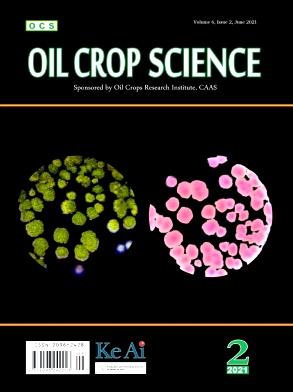植物油基纳米乳液的相变温度优化及抗氧化性能评价
Q3 Agricultural and Biological Sciences
引用次数: 0
摘要
研究了南瓜籽油、葡萄籽油和葡萄柚精油的纳米乳液的制备,并利用相变温度(PIT)技术对其进行了优化。研究了表面活性剂类型和浓度对纳米乳关键性能的影响,包括液滴尺寸、多分散性指数(PDI)和zeta电位。采用Box-Behnken设计(BBD)模型,优化了含有6.0%植物油、10.0% Tween 80、2.0% Span 80和1.0%卵磷脂的配方,获得了纳米级液滴(33.52 nm)、低PDI(0.205)和稳定的zeta电位(- 15.49 mV)。通过2,2-二苯基-1-苦味酰肼(DPPH)自由基清除实验,对其抗氧化活性进行了评价,证明了其显著的抗氧化活性。纳米乳化剂的抗坏血酸清除能力超过2250 μg /g,明显优于非纳米乳化剂。在各种环境条件下的稳定性测试突出了优异的稳健性,冷藏样品在30天的储存期内保持结构完整性,最小的粒径增长和一致的物理化学性质。结果表明,植物油基纳米乳液具有很强的抗氧化能力,在药妆和治疗制剂中具有广阔的应用前景。本文章由计算机程序翻译,如有差异,请以英文原文为准。
Optimization of plant oil-based nanoemulsions prepared via phase inversion temperature and evaluation of their antioxidant capacity
This study focuses on the preparation, and optimization of the nanoemulsions coorporating with pumpkin seed oil, grape seed oil, and grapefruit essential oil using the phase inversion temperature (PIT) technique. The research investigated the impact of surfactant types and concentrations on critical nanoemulsion properties, including droplet size, polydispersity index (PDI), and zeta potential. Using a Box-Behnken Design (BBD) model, the formulation was optimized containing 6.0% plant oils, 10.0% Tween 80, 2.0% Span 80, and 1.0% lecithin to achieve nano-sized droplets (33.52 nm), with a low PDI (0.205), and a stable zeta potential (−15.49 mV). The antioxidant activity, was evaluated through 2,2-diphenyl-1-picrylhydrazyl (DPPH) radical scavenging assays, demonstrating its outstanding efficacy. And the optimized nanoemulsion showed a radical-scavenging capacity exceeding 2250 μg ascorbic acid equivalents/g, significantly outperforming non-nanoemulsified oils. Stability testing under various environmental conditions highlighted exceptional robustness, with refrigerated samples maintaining structural integrity, minimal particle size growth, and consistent physicochemical properties over a 30-day storage period. The results suggest that the plant oil-based nanoemulsions exhibit strong antioxidant potential, offering a promising natural treatment for their application in cosmeceutical and therapeutic formulations.
求助全文
通过发布文献求助,成功后即可免费获取论文全文。
去求助
来源期刊

Oil Crop Science
Food Science, Plant Science, Agronomy and Crop Science
CiteScore
3.40
自引率
0.00%
发文量
20
审稿时长
74 days
 求助内容:
求助内容: 应助结果提醒方式:
应助结果提醒方式:


